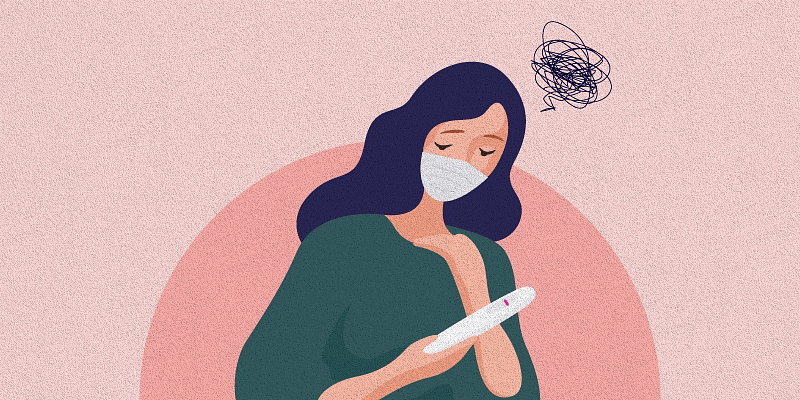Safe Termination or Self Termination?
A womxn’s body is capable of wonders. It isn’t just a mere structure of flesh, blood, and bones. It holds power to bring another life into the world. A girl’s reproductive years begin with menarche and terminate at menopause. The entire journey, from nurturing for 9 months to giving birth, demands certain appropriate measures and care. A womxn not only renders her womb but also devotes her time, mind, and soul. When such a crucial phase of a womxn’s life goes unattended or poorly conducted, many problems arise. Most of the time, the victims of neglected reproductive health are adolescents.

THE NEGLIGENCE
The talk about sexual and reproductive health is seen through orthodox eyes and hence not widely done. The negligence has come up due to the taboos associated with the same. Even the concept of SRHR is something that Indians and South Asian womxn are aloof about. This has led to major health issues amongst pregnant womxn. As mentioned earlier, adolescents are more prone to fall into the trap of obliviousness and India accounts for 1.6 pregnancies between the age group of 15-19 years. India is also the home to 33 percent of child brides on Earth.
A controversial statement was made by Indian politician Sajjan Singh Verma where he said “Pandrah saal ke baad hee bachhi prajanan ke yogya ho jaati hai,’’ meaning that females can have a child by age 15. This was strongly opposed since just because a female has started to ovulate doesn’t mean her body is ready for the consequences of child-birth. Such factually incorrect statements made on a public platform greatly impact the thinking of society, and hence it is important to know that adolescent pregnancies are not safe.
Teen pregnancies carry the bulk of many health problems. Both the mother and child’s lives are at stake since teens tend to have high blood pressure and complications during pregnancy. There are risks of premature birth and low birth weight of the child. Psychologically too, young mothers have a higher rate of suicide ideation and depression.
In India, this is more prevalent in rural areas. Rural areas being devoid of prenatal health care facilities, fail to provide basic necessities. Being a child herself, a teen mustn’t be bombarded with the responsibility of raising a child. Thanks to laws like the Prohibition of Child Marriage Restraint Act, 2006, this problem has been greatly reduced. However, it still prevails. Major reasons include poverty, raging hormones, rape, peer pressure to be sexually active, which is generally without contraceptives. Some of these pregnancies are unwanted and hence confused teens, financially unstable parents resort to the only option of getting rid of the unborn child, abortion. While this may seem like an easy way out, it isn’t.

UNSAFE ABORTION
In a country like India, where abortion is legal, one might think it is a cakewalk to get it done safely. Yet, fifty percent of maternal deaths among girls from 15-19 years of age occur due to unsafe abortion practices. Taking the hypothetical example of a 17-year-old pregnant female, say, X, we shall analyze how the Age of Consent appears as a hurdle in the road.
In case 1, Ms. X visits a reputed hospital and asks the gynecologist for an abortion. The doctor determines the age via identity proof and is bound to inform the police since the age of consent says that sex before 18 is regarded as rape and cannot be consensual. Ms. X not only has to undergo police investigation but also is defamed publicly, and her boyfriend is arrested. On the bright side, she gets a safe abortion.
In case 2, Ms. X goes to a shady clinic, no questions are asked, but unsafe abortion is practiced illegally.
Teens are more likely to be drawn towards the second case since it’s evidently easy and overcomes the chances of being socially attacked. Notwithstanding, case 2 was highly unprofessional and threw Ms. X into the pool of possible difficulties such as perforation of the uterus, cervical lacerations, or hemorrhage, ectopic pregnancy, chronic pelvic infection, and infertility. The fear of police drama and public attention makes it worse. It is indeed debatable because, on the one hand, the age of consent helps teen rape victims. Still, on the other hand, as said by VS Chandrashekar, CEO at Foundation for Reproductive Health Services India, “The shift from 16 to 18 (years of age) has put people in consensual relationships in that age bracket in a challenging position. There’s a strong need to review this.”

THE IMPACT
Unsafe abortion practices have added up to the mortality rate of adolescents. The already unsteady public health system of India is unable to cope with the problem. Teen mothers have to face the harsh reality of Indian society and become subject to humiliation. Stringent laws put the doctors on the path of dilemma. They are under the constant pressure of making the right choice. Denying abortion seems criminal to them, and not involving the police is not legally accepted.
Dr. Pradhan says, “even the doctors who are motivated to help would get demotivated. The teenage girls will have no choice but to go to quacks resulting in an increase in septic abortions and mortalities. It will defeat the purpose of the MTP Act.” While watching westernized content about teen pregnancy, it often strikes our minds, “wow! a piece of cake.” But is it? One would see high-schoolers happily raising kids in One Tree Hill or Glee, but the real picture is seen in one of Grey’s Anatomy episodes. It isn’t just a socio-psycho burden on the girl but a public health issue.

Literacy about contraceptives, drugs, Planned Parenthood, safe abortions, and teen pregnancy is a must, especially until the concerns of MTP are all completely addressed. Some adolescents may bloom as successful parents but bringing and raising a life is no unchallenging game.
Featured Image: okpolicy
Author

